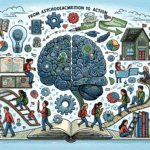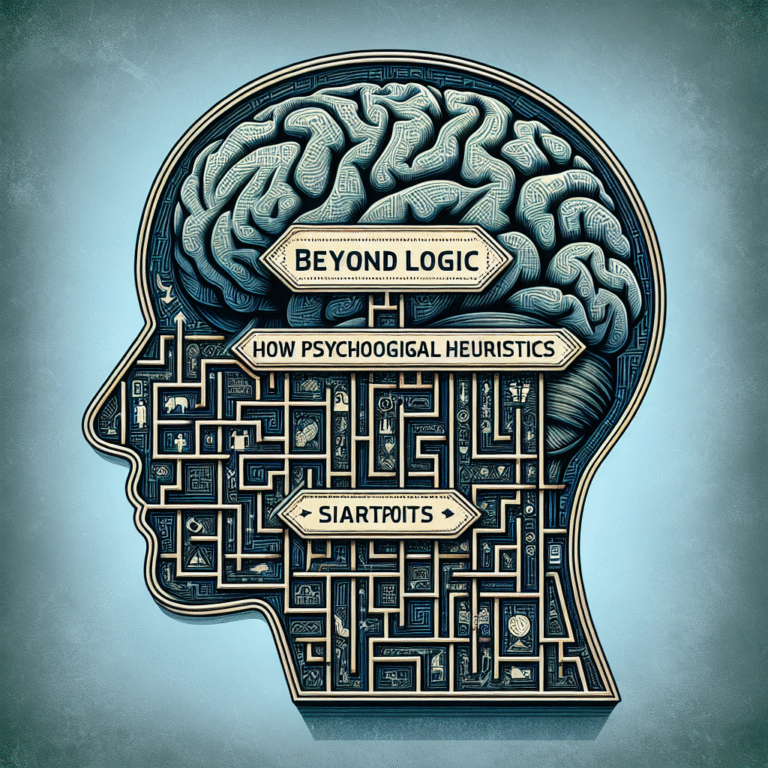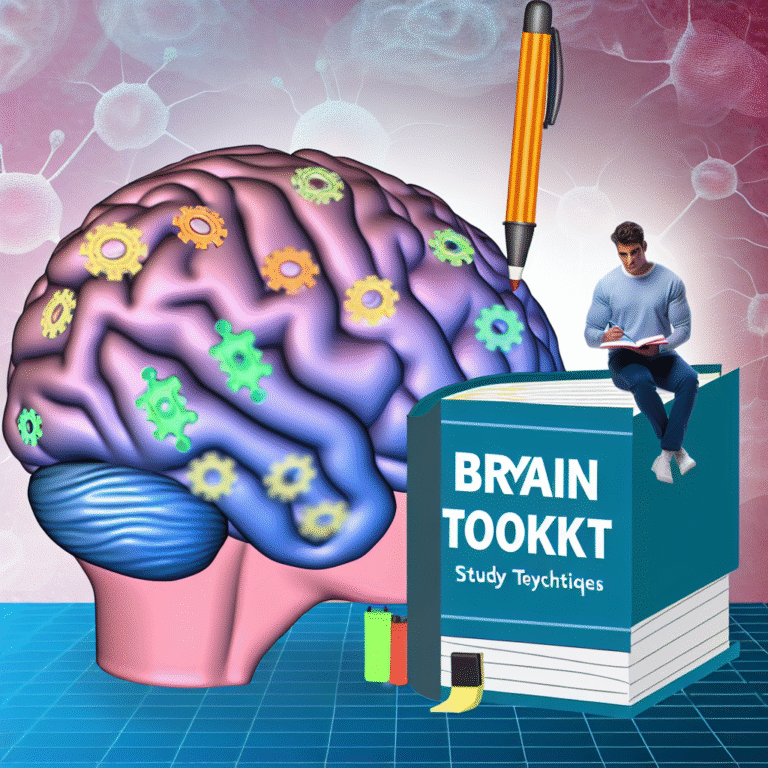Unlocking the Ultimate Potential: Using Behavioral Psychology to Foster Innovation in Teams
Introduction
In today’s fast-paced world, innovation isn’t just a buzzword; it’s the lifeblood of successful organizations. The quest to foster innovative thinking among team members is critical, yet many companies grapple with how to create an environment conducive to creativity. This article delves into Using Behavioral Psychology to Foster Innovation in Teams, revealing strategies to harness the principles of human behavior to encourage creative collaboration, risk-taking, and breakthrough ideas.
Behavioral psychology provides insights into how individuals think, feel, and act within a group context, making it an invaluable tool for leaders aiming to spark innovation. By understanding the cognitive biases, intrinsic motivations, and social dynamics that influence team members, organizations can design strategies that promote a culture of creativity.
Understanding Behavioral Psychology
What is Behavioral Psychology?
Behavioral psychology studies how people’s actions are influenced by their environment, cognition, and emotions. It emphasizes the interaction between individual behaviors and the surrounding context, making it essential for understanding team dynamics.
Key Concepts Relevant to Teams
Cognitive Dissonance: The mental discomfort experienced when holding two conflicting beliefs. Understanding this can help teams address conflicts and foster better collaboration.
Motivation Theory: The notion that motivations can be intrinsic (internal satisfaction) or extrinsic (external rewards). Recognizing what drives team members can enhance engagement and creativity.
- Social Proof: The tendency to mimic the actions of others, especially in ambiguous situations. This can be harnessed to create a more innovative team culture where members feel empowered to contribute ideas.
Fostering a Culture of Creativity
Creating Safe Spaces for Idea Generation
Psychological safety is critical in innovative teams. Team members must feel comfortable sharing ideas without fear of judgment. Using Behavioral Psychology to Foster Innovation in Teams involves implementing strategies that promote this safety.
A study by Google, known as Project Aristotle, revealed that psychological safety was the most important factor in determining team effectiveness. Companies can cultivate this by:
Encouraging Open Dialogue: Regular check-ins and brainstorming sessions can create avenues for sharing ideas openly.
- Accepting Failure as Part of Innovation: Acknowledging failed attempts can reduce fear and encourage experimentation.
Utilizing Intrinsic Motivation
Research shows that intrinsic motivation leads to higher creativity. To tap into this, leaders can focus on:
Mastery: Allowing team members to work on projects that help them develop their skills can enhance their desire to innovate.
- Purpose: Connecting tasks to a larger organizational vision can create a sense of belonging and a desire to contribute creatively.
Case Study Example: IDEO
Company: IDEO, a leading design and consulting firm.
Challenge: Encourage constant innovation amidst a highly competitive landscape.
Strategy: IDEO emphasizes a culture of experimentation and iterative design. Team members are encouraged to prototype ideas rapidly in a safe environment, fostering innovative thinking.
Outcome: The company has been at the forefront of design innovation, helping clients like Apple develop innovative products, such as the first computer mouse.
Enhancing Collaboration with Behavioral Insights
Effective collaboration is a cornerstone of innovation. Teams thrive when diverse ideas and perspectives are shared.
The Role of Diversity in Creativity
Diversity brings together various viewpoints, spurring innovative ideas. Behavioral psychology shows that groups with varied backgrounds can lead to more creative solutions.
Diversity Training Programs: Implementing training that highlights the value of diversity can shift team dynamics positively.
Establishing Structured Brainstorming Sessions
Brainstorming shouldn’t be chaotic; it should have structure. Using behavioral psychology, leaders can facilitate effective brainstorming by:
Setting Clear Objectives: Participants should know what they are aiming to achieve during brainstorming sessions.
- Using Techniques like Brain Writing: This method allows individuals to write their ideas down, increasing participation from quieter team members.
Case Study Example: Atlassian
Company: Atlassian, a software company known for tools like Jira and Trello.
Challenge: Creating an environment where engineers feel comfortable sharing ideas.
Strategy: Atlassian employs structured innovation days, where teams have dedicated time to brainstorm and pitch new product ideas without the usual constraints and deadlines.
Outcome: This practice has led to groundbreaking features in their software, showcasing the effectiveness of dedicated time for creative thinking.
Overcoming Psychological Barriers to Innovation
Recognizing Cognitive Biases
Cognitive biases can hinder innovation. Team leaders must be aware of common biases that may affect decision-making, such as:
Confirmation Bias: Teams may seek information that confirms existing beliefs, squashing new ideas.
- Groupthink: The tendency for consensus at the expense of critical thinking can stifle creativity.
Implementing Feedback Loops
Regular feedback is vital in fostering an environment where innovation can flourish. Collecting feedback helps teams refine ideas continuously and encourages open communication.
Utilizing Metrics and Recognition
Recognizing contributions to innovative projects enhances motivation. Behavioral psychology suggests that positive reinforcement can improve team dynamics.
Performance Metrics: Establish KPIs that reward creativity and the sharing of innovative ideas.
- Celebrating Successes: Highlight individual and team achievements in innovation to encourage continued contributions.
Case Study Example: 3M
Company: 3M, known for innovation-driven products like Post-it Notes.
Challenge: Encourage employees to innovate within the company’s structure.
Strategy: The "15% rule" allows employees to dedicate 15% of their time to pursue projects of their choice.
Outcome: This approach has led to the development of numerous successful products, proving the power of allowing employees to innovate freely.
Building an Innovation-Friendly Environment
Physical Workspace Design
The design of physical spaces can significantly impact creativity. Research indicates that open and flexible workspaces can foster greater collaboration.
- Flexibility: Providing spaces that can be altered for different uses can encourage teams to collaborate and innovate.
Technology as an Enabler
Leveraging technology can enhance collaboration. Tools that support remote teamwork can help eliminate barriers and create a more inclusive innovation environment.
Incorporating Gamification Elements
Gamification can make the innovation process more engaging. Incorporating game-like elements, such as rewards and challenges, can motivate team members to participate actively in the innovation process.
Case Study Example: SAP
Company: SAP, a global leader in enterprise application software.
Challenge: Engage employees in innovative processes actively.
Strategy: Implement gamification strategies in their internal processes, allowing employees to earn points and rewards for brainstorming and innovative contributions.
Outcome: This approach has not only increased participation in innovation initiatives but has also fostered a culture of creativity across the organization.
Evaluating the Impact of Behavioral Strategies on Innovation
Measuring Success
To understand the effectiveness of Using Behavioral Psychology to Foster Innovation in Teams, organizations must implement methods to assess the impact of their strategies.
Surveys and Feedback: Regular surveys can help gauge employee sentiment about the innovation culture.
- Innovation Metrics: Tracking the number of new ideas generated and the success rate of implemented innovations can provide insights into the effectiveness of applied behavioral strategies.
Continuous Improvement
Using behavioral psychology is not a one-time effort but rather a continuous loop of evaluation and learning. Organizations should regularly revisit strategies, adapting to new information and the evolving dynamics of their teams.
Conclusion
Incorporating behavioral psychology into the innovation process is not just about understanding what makes teams tick; it’s about creating an environment where ideas can flourish. By fostering psychological safety, utilizing motivation insights, and recognizing cognitive biases, leaders can transform their teams into innovative powerhouses.
As we’ve explored through various case studies, organizations that embrace these strategies often find themselves in a greater competitive position and a more engaged workforce.
As you look to implement these principles within your team, remember that innovation is not a destination—it’s a continuous journey.
FAQs
1. What is the role of psychological safety in team innovation?
Psychological safety allows team members to share ideas without fear of negative consequences, fostering an environment where creativity can thrive.
2. How can intrinsic motivation impact innovation?
Intrinsic motivation encourages individuals to engage in tasks for their own satisfaction, leading to higher creativity and dedication to innovative efforts.
3. What cognitive biases should teams be aware of?
Common cognitive biases like confirmation bias and groupthink can hinder fresh ideas and perspectives, making it crucial for teams to recognize and address these.
4. How can feedback improve innovation processes?
Regular feedback loops allow for continuous improvement and ensure that team members feel valued, which can stimulate further innovative efforts.
5. What metrics can organizations use to measure innovation success?
Organizations can measure innovation success through employee surveys, tracking the number of new ideas generated, and the rate of successful implementations.
Harness the power of behavioral psychology today to propel your team toward uncharted territories of innovation!












